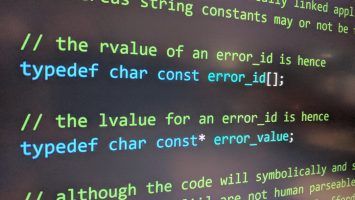As global digital transformation continues to accelerate, the need for efficient and accurate localization has never been greater. XLIFF (XML Localization Interchange File Format) files play a crucial role in modern translation workflows, enabling streamlined file exchanges between source content creators, translators, and localization platforms. Translating XLIFF files online in 2025 requires a strategic blend of the right tools, best practices, and quality assurance measures. If done correctly, it can significantly improve efficiency and maintain linguistic accuracy across markets.
Contents
What Are XLIFF Files?
XLIFF is a standardized XML-based format specifically designed for localization. Instead of working directly with raw software strings, developers and translators use XLIFF files to manage translatable content in a structured and isolated way. This ensures that only the necessary text segments are presented for translation, while metadata, coding syntax, and formatting remain untouched.
Key components of an XLIFF file include:
- Source text: The original text to be translated.
- Target text: The translated output.
- Translation units: Pairs of source and target segments.
- Comments and notes: Context rules or translator annotations.
Step-by-Step: How to Translate XLIFF Files Online Successfully
To ensure seamless, professional and accurate online translation of XLIFF files in 2025, follow these essential steps:
1. Choose a Reliable Online Translation Platform
Not all platforms handle XLIFF files equally. Opt for platforms that specialize in localization and offer robust support for XLIFF standards (including XLIFF 1.2 and XLIFF 2.0). Top-tier platforms typically include advanced features such as translation memory, glossary integration, and real-time collaboration.
Recommended platforms as of 2025:
- Smartling
- SDL Trados Live
- Phrase
- Memsource (Phrase TMS)
[ai-img]xliff files, translation tools, localization workflow[/ai-img]
2. Upload and Analyze the XLIFF File
Begin by uploading your XLIFF file to the chosen platform. Use the integrated parsing tools to identify translatable segments, tags, and contextual notes. This step ensures that no critical information is overlooked or misinterpreted during translation.
Tip: Always validate the XLIFF structure before translation begins. Errors in XML formatting can lead to data corruption or incomplete translations.
3. Use Contextual Aids and Built-in Machine Translation (MT)
Most modern platforms now include AI-powered machine translation to expedite the workflow. However, for professional-quality output, pair MT suggestions with human linguistic review. Contextual aids — such as source comments, screenshots, and translation memories — will increase translation accuracy.
4. Collaborate with Professional Linguists
Even in 2025, human review remains essential. Utilize online workflows that allow collaboration between translators, project managers, and reviewers. Real-time editing features and version tracking enhance efficiency while reducing the potential for inconsistencies.
[ai-img]team collaboration, translators, editing interface[/ai-img]
5. Conduct Quality Assurance Checks
Before downloading or deploying the translated XLIFF file, it’s crucial to conduct QA checks. These should include:
- Spellcheck and grammar validation
- Terminology consistency
- Tag integrity and placement verification
- Character encoding checks (UTF-8 compliance)
Modern platforms often include automated QA tools, but manual revision by native speakers is advised for high-stakes content such as legal, medical, or technical materials.
Best Practices for XLIFF Translation
- Maintain a centralized translation memory (TM): Reusing validated translations ensures consistency across projects and speeds up the translation process.
- Employ style guides and glossaries: Detailed language and tone guidelines help ensure the brand voice remains uniform across languages.
- Backup your XLIFF files before and after editing: Versioning is essential to avoid data loss or unwanted changes.
Conclusion
Successfully translating XLIFF files online in 2025 requires more than just selecting an online translator. It demands an end-to-end strategy incorporating powerful localization tools, human expertise, AI enhancements, and rigorous quality control. Whether you’re localizing software strings, websites, or enterprise documentation, a structured and thoughtful approach ensures both efficiency and accuracy.
By following the above steps and best practices, businesses and content creators can confidently deploy multilingual content to international audiences, while maintaining fidelity to source material and cultural nuance.



